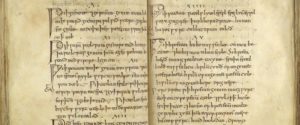I am a serious news junkie these days, and I am never satisfied by the stripped-down daily brief or casual perusal of the headlines. I want the digging-into-the-deep-marrow kind of in-depth reporting that seems to be in decline in our instant-gratification-obsessed culture—the kind that takes months of investigation and hard work to uncover, and real talent to produce and present cohesively. I have found that one of the most enjoyable ways to quench my thirst for this type of journalism is in the form of podcasts. For culture and politics The Center for Investigative Reporting’s Reveal is absolutely on point, as is Politico’s the Global Politico. If you are a health care policy wonk, the new podcast put out by vox called the Impact produces very compelling stories on how policy impacts human lives. Oh hey, and did you know that the JAMA Network also produces a podcast series where you can catch up on the research, opinion, and educational content from across all our journals while on your daily commute or during your workout?
For me though, the absolute best example of the kind of work that a podcast can do is to be found in WNYC’s Radiolab. This is a highly entertaining and effective show where culture, science, and the humanities converge in ways that are entertaining, enlightening, and often deeply moving.
It was on Radiolab that I encountered a fascinating story that encompassed some of the questions central to my own scholarly interests: ancient texts and the intersections between superstition and science, magic and modernity. The episode is called Staph Retreat, wherein we learn of 2 researchers at the University of Nottingham who make a surprising medical discovery in an enigmatic 1000-year-old text called Bald’s Leechbook.

The story centers around a bioscientist who studies history as a hobby and a historian who dabbles in bioscience in her spare time. The pair share a fascination with the medical text and decide to use their combined talents to put one of the remedies to the test in a scientific study. The remedy is for what appears to be a staph infection.
Remarkably, they found that the remedy was efficacious in treating Staphylococcus aureus in an in vitro model of soft tissue infection and even killed methicillin-resistant S aureus (MRSA) in a mouse wound model. You can find the peer reviewed findings of their study published under an open access license in mBio here.
At a time when the dangers of antibiotic-resistant bacteria are becoming more apparent and urgent, is it possible that ancient texts may hold novel approaches to keeping our armamentarium apace with the evolution of these resistant infections? That may be a stretch, but it does open up a whole new area of study, ancientbiotics, which could theoretically yield new treatment options for increasingly resistant bacterial infections.
Perhaps equally important, this scholarship has implications that pertain to our modern conceptions of premodern physicians and caregivers. These researchers discovered that the efficacy of the remedy was decreased if any one of the ingredients was removed, implying a synergistic activity of the entire combination. This highlights a level of rational methodology that is often denied to premodern medical professionals by modern medical historians.—Gabriel Dietz

Thank you for this. I am definitely in the historian camp with growing knowledge of science,